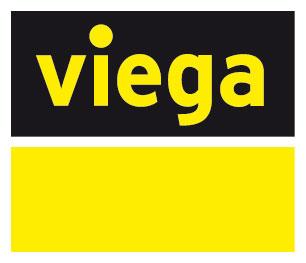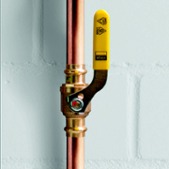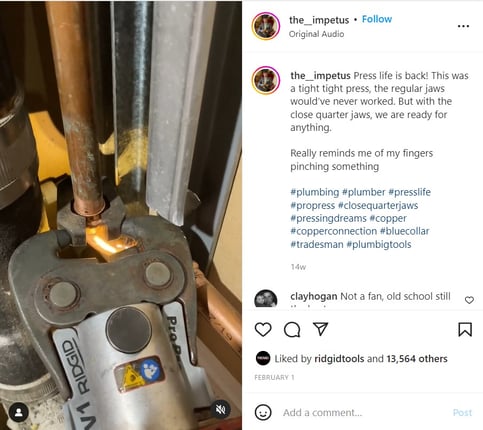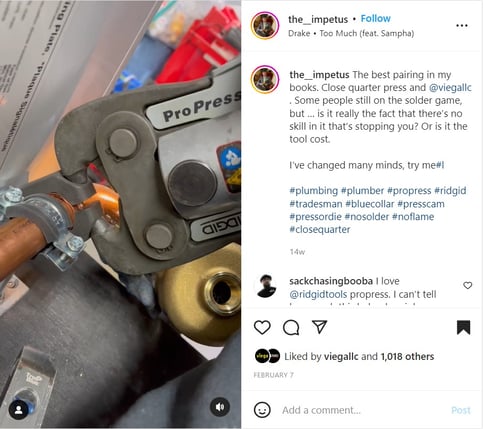Too often, plumbing requires worming yourself, your tools and product into spaces not designed to accommodate them all. And once you’re in there you’re likely to find another obstacle to making a press, like a joist, wall, ductwork, etc.
Don’t give up; there are ways to work around these obstacles.
In close quarters, smaller and flexible tools have the advantage. The Viega Pressgun 6 and Pressgun Picco 6 are inline and smaller than other pressguns. They both feature barrel rotation, which makes it easier to work in tight quarters. RIDGID C1 Compact Rings for ProPress (½" to 1¼") allow access in tighter spaces and have a swivel actuator that allows the tool to be placed at 90 degrees to the tube being pressed.
Here are two examples of how to press in tight spaces:
How to control deflection
Working in tight quarters can rule out two of the most common methods for avoiding deflection when pressing. For example, it might be impossible to press a single end of a fitting from opposite sides or press from opposite sides on each end of the fitting. However, there are two other methods to use:
- Push-pull method – Rings and jaws cause deflection in opposite directions since the openings are at opposite ends. When using rings, push on the press tool to counteract it. When using jaws, pull on the press tool. Judging the right amount of force takes practice.
- Feathering – Slowing and interrupting the press by taking your finger off the trigger of the tool can reduce or eliminate the deflection. Again, this will take some practice to learn.
Minimum distances between press fittings
Sometimes the spacing challenge isn’t posed by a duct or wall stud, but by another fitting on the pipe. How much room is required between press fittings? It depends on the material.
If you’re using ProPress copper and stainless 1" or smaller, the fittings can touch each other. (Make sure there is enough pipe to fully insert into both fittings.) As the pipe size increases to 2" so does the required distance between fittings:
- 1¼" requires a 7/16" gap
- 1½" requires a 5/8" gap
- 2" requires a ¾" gap
- 2½", 3" and 4" require a 5/8" gap
MegaPress requirements are simpler:
- ½" to 2" require a ¼" gap
- 2½", 3" and 4" require a ½" gap
Minimum distances between press fittings and soldered joints
The required distance between a press fitting and a soldered joint is greater than between two press fittings (another advantage for pressing). The rule is three times the pipe diameter, so:
- ½" requires a 1½" gap
- 2" requires a 6" gap
Brazing near a press fitting requires nine time the pipe diameter, so:
- ½" requires a 4½" gap
- 2" requires an 18" gap
Welding on the same pipe as a MegaPress fitting requires a 3" gap, regardless of pipe size. Welding on a pipe adjacent to a pipe with a press fitting requires a 4" gap.
Tight quarters are an unavoidable part of plumbing, but pressing can make it easier to get a difficult job done quickly and easily.










